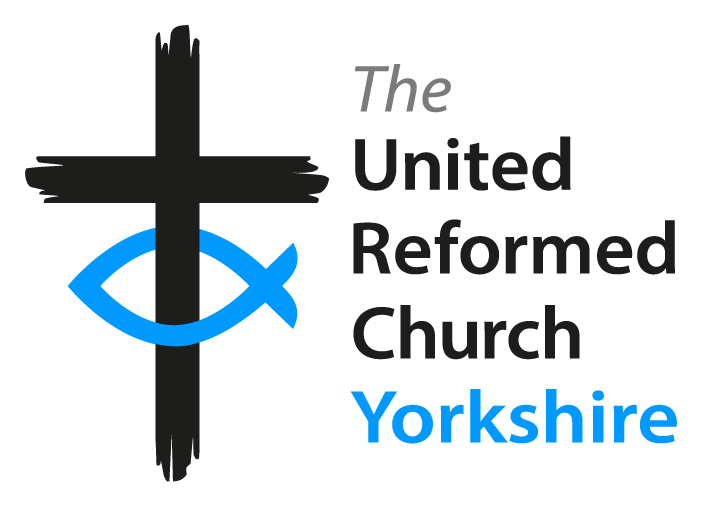Listed Buildings
Caring for our buildings, so they'll care for us.Many church buildings will be listed, and will become listed. Listed buildings often get very negative press! But we think there are four key reasons why we should bother about listed buildings:
History
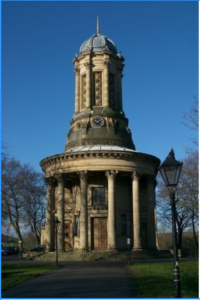 History matters, because past and present are inextricably intertwined. Who we are as the United Reformed Church very much grows out of who we have been. We are the way we are because of our history.
History matters, because past and present are inextricably intertwined. Who we are as the United Reformed Church very much grows out of who we have been. We are the way we are because of our history.
Our journey as a church is clearly reflected in the buildings our forefathers erected to worship in, many of which are widely recognised as being of historic and architectural importance. The listed church buildings in Yorkshire tell us much about this story. For example:
• about the importance to our forebears (and so to us) of gathering round the Lord’s Table;
• about our tradition’s emphasis on proclaiming the Word;
Each of the 31 listed United Reformed Church buildings in Yorkshire has been judged by a body external to ourselves and competent to make the judgement, as being important in the history of their communities and worth a second or even a third or fourth glance architecturally. What an endorsement! What an opportunity to declare the church’s long-standing and continuing mission to the people!
Heritage is big business!
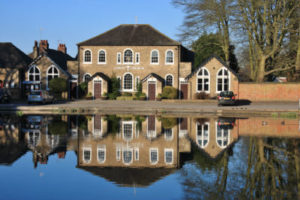 Heritage is the object of much public interest.
Heritage is the object of much public interest.
The historic church building is a particular asset because the history can be used as a platform for mission. Moreover, many historic churches are in prime positions in their respective communities. Being a listed building almost automatically attracts more visitors!
Opportunity
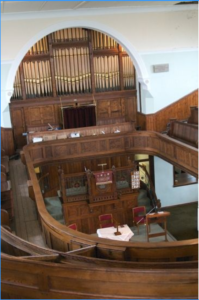 Consider these facts:
Consider these facts:
• Regeneration and renewal have always been part of the life of Independent churches, though one must be ready for the unpredictable.
• The introduction of expertise and cash to renovate, revitalises both the spiritual and community dimension of church life:
The Methodist Church can demonstrate that increased community use, a renewal of mission and wider community regeneration follow careful restoration of historic churches.
The Church of England can show that giving the church in a historic building the right kind of help over bad times is usually followed by a regeneration of mission.
• English Heritage is there to help and they are keen to work with the churches.
• Vast sums of public money have been allocated to the conservation, restoration and development of historic church buildings in recent years and continue to be available; for example, £16.6m of the Yorkshire and the Humber region Heritage Lottery Fund has gone to support places of worship.
The challenge
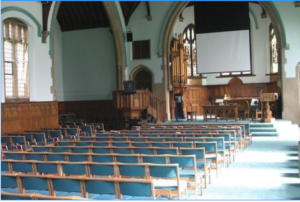 Our history is important to contemporary society.
Our history is important to contemporary society.
We are being called to think about the buildings that reflect it in a different way; to ask ourselves about ways of presenting historic buildings to the world which will support our mission, benefit our own church life, and support community involvement and community regeneration.
Listed Buildings Advisory Committee
To help churches manage their listed building. The synod has the Listed Buildings Advisory Committee. Aptly named, they provide advice to the synod, through the Property Officer / Trust Secretary.
Legislation
Important: Please Read!
Under legislation of 1990 (The Planning (Listed Buildings and Conservation Areas) Act 1990) the Secretary of State must compile and maintain a list of buildings of ‘architectural, artistic archaeological or historic significance’. In the words of the Act, ‘No person shall execute or cause to be executed any works for the demolition of a listed building or for its alteration or extension in any manner which would affect its character as a building of special architectural or historic interest, unless the works are authorised’ Buildings on the list may be graded 1 (the top two per cent of listed buildings) or 2* (the next four per cent). The remainder are Grade 2. Until October 1994, controls on alterations to listed buildings did not apply to places of worship. In that year, however, the Government brought all listed buildings within the same framework. It reviewed the arrangements and reaffirmed them in 2009/2010. New arrangements, building on the old were introduced in April 2010 when the Government introduced a new Planning Policy Statement for the built heritage. The responsibility for managing the list is with English Heritage, and the equivalent bodies in Scotland and Wales. The responsibility for seeing that a local church remains within the law belongs to the managing trustees, usually the Elders. The responsibility for giving listed buildings consent for changes to listed church buildings is with the United Reformed Church (in parallel with other churches) through its Synod structure. Local authorities have a limited role with regard to listed churches, although they are responsible for supervising alterations to secular listed buildings. The Listed Buildings Advisory Committee, alongside the other synod committees involved with buildings and finance, exists to support churches in complying with the law, and help them discharge their responsibility for the historic buildings they have inherited – and will pass on. Members of the committees are more than happy to be invited to talk over ideas as they are developed – the sooner the better. Without prejudice to any final decision, it is possible to discuss the potential project and make suggestions about how it could best be brought about. As Christian citizens we accept the spirit and letter of the law and work conscientiously within it. The arrangements we have negotiated with the government, which give us control – within parameters – of our own destiny, are valuable and not to be taken lightly or carelessly thrown away. However, where the churches’ mission demands it there are ways of both retaining the best and providing suitable resources for the future. In this way our buildings will continue to serve us while telling us about who we are and how we come to be what we are.
Useful Links
English Heritage
Yorkshire region is based in York. Temas of architects and architectural hisotrians.
Listed Places of Worship Grant Scheme
Grant Scheme gives grants that cover the VAT incurred in making repairs to listed buildings in use as places of worship. Covers repairs to the fabric of the building, along with associated professional fees, plus repairs to turret clocks, pews, bells and pipe organs.
Churches Regional Commission
Much expertise on interpreting church buildings for visitors and others. Good contacts with other relevant organisations. Sources of funding. Helpful website.
